#maria alexandrovna of russia (marie of hesse)
Explore tagged Tumblr posts
Text

Portrait of Empress Maria Alexandrovna (1857),(detail), by Franz Xaver Winterhalter (German, 1805–1873), oil on canvas, 120 × 95 cm, The State Hermitage Museum, Saint Petersburg
#portrait of empress maria alexandrovna#franz xaver winterhalter#painting#my upload#oil on canvas#state hermitage museum#hermitage museum#hermitage#saint petersburg#maria alexandrovna#maria alexandrovna of russia#princess wilhelmine marie of hesse and by rhine#maria alexandrovna of russia (marie of hesse)#19th century#portrait#royal portrait#art#fine art#painting detail#detail
125 notes
·
View notes
Photo

1857 Franz Xaver Winterhalter, Portrait of Empress Maria Alexandrovna wife of Tsar Alexander II (Maria Alexandrovna of Russia (Marie of Hesse)), detail.
Hermitage Museum, St. Petersburg.
#1857#painting#portrait#franz xaver winterhalter#empress maria alexandrovna#detail#my edits#marie of hesse#maria alexandrovna of russia#tsar alexander ii#dress detail#pearls#beautiful dress#winterhalter#court dress#gala dress#gala gown#court gown#Magnificent pearls#melancholy
68 notes
·
View notes
Text
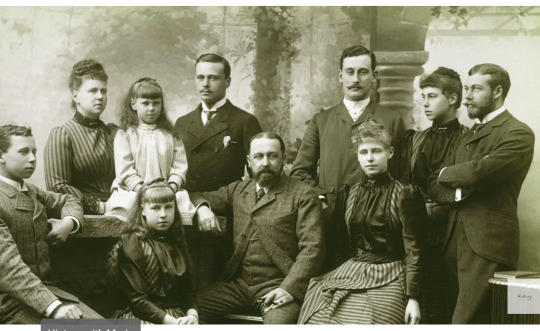
The extended family
So you may say that there is not one single "Romanov" in this photograph...but it is possible to identify at least a full-blooded one (the daughter of an Emperor no less) and the others are very important characters in the story of the dynasty.
From left to right, standing:
Grand Duchess Maria Alexandrovna of Russia (Duchess of Edinburgh then Duchess of Saxe-Coburg and Gotha, married to Queen Victoria's second son Albert).
The little girl next to her is her youngest daughter, Princess Beatrice of Edinburg first, then of Saxe Coburg and Gotha (she was quite in love with Grand Duke Mikhail Alexandrovich at one point, but they were first cousins and could not marry, later she married into the Spanish nobility.)
Ernst Ludwig, Grand Duke of Hesse (brother of Tsarina Alexandra and future husband to Grand Duchess Maria's second daughter, Victoria Melita (I don't think they were married at this point although I could be wrong).
A very young Ferdinand, Crowned Prince of Romania (probably not married to Marie yet, but I am not sure);
Victoria Melita, Princess of Edinburgh, later Princess of Saxe-Coburg and Gotha, second daughter of Grand Duchess Maria
The future George V (this was the man that Marie's father Alfred dreamed of his daughter marrying but his wife opposed the idea. George himself was very amenable.
From left to right, sitting
Young Alfred, Hereditary Prince of Saxe-Coburg and Gotha, son of Grand Duchess Maria and of Alfred, Duke of Saxe-Coburg and Gotha (second son of Queen Victoria).
The third daughter of Maria and Alfred, Alexandra, Princess of Saxe-Coburg and Gotha
Alfred, Duke of Saxe Coburg and Gotha, second son of Queen Victoria.
A very young Marie, Crowned Princess of Romania (or very nearly so)
#imperial russia#russian history#romanov family#Grand Duchess Maria Alexandrovna#Grand Duke Ernst Ludwig of Hesse#Alfred#George V#Victoria Melita#Marie#Ferdinand#Crowned Princess of Romania
8 notes
·
View notes
Text
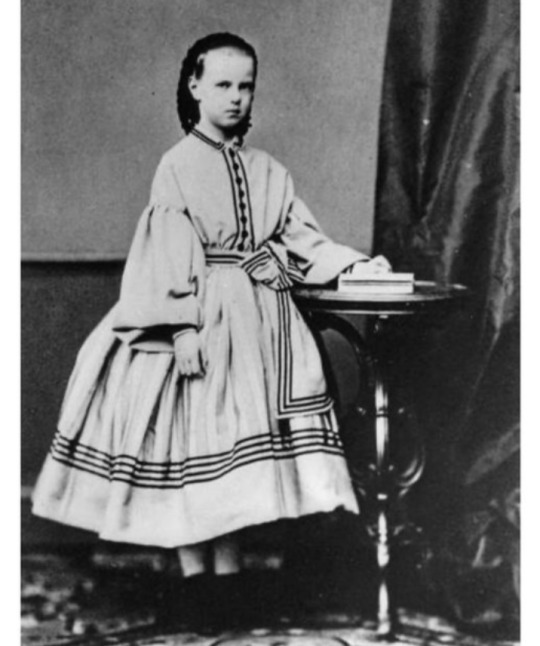

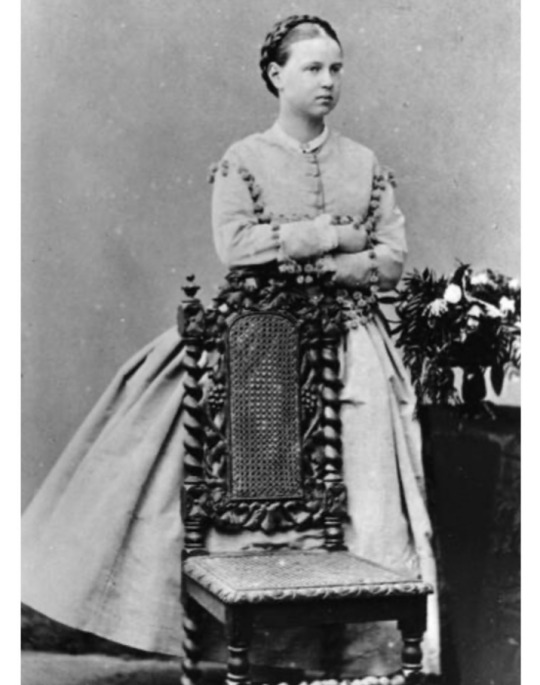
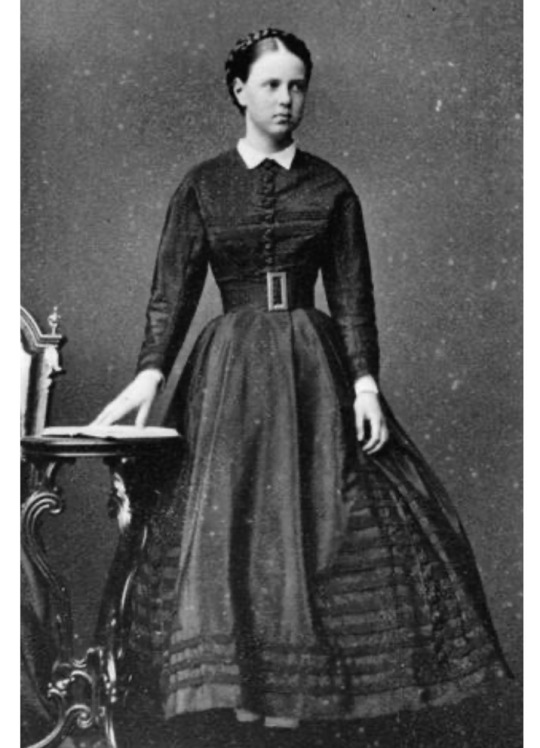





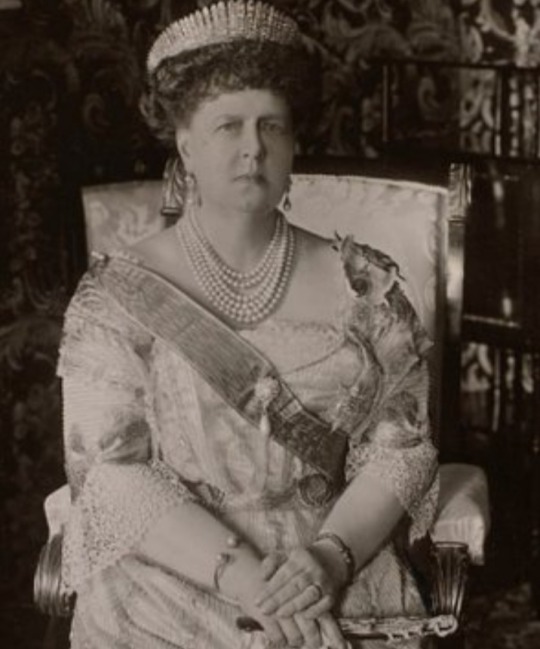
BORN ON THIS DAY:
Grand Duchess Maria Alexandrovna of Russia (17 October [O.S. 5 October] 1853 – 24 October 1920) was the fifth child and only surviving daughter of Alexander II of Russia and Marie of Hesse and by Rhine.
She was Duchess of Edinburgh and later Duchess of Saxe-Coburg and Gotha as the wife of Alfred, Duke of Saxe-Coburg and Gotha.
She was the younger sister of Alexander III of Russia and the paternal aunt of Russia's last emperor, Nicholas II.
#Grand Duchess Maria Alexandrovna of Russia#Alexander II of Russia#Marie of Hesse and by Rhine#Prince Alfred#Duke of Saxe-Coburg and Gotha#Alexander III of Russia#Nicholas II#House of Romanov#Hesse-Darmstadt#House of Hesse#House of Saxe-Coburg and Gotha
6 notes
·
View notes
Text

"The great day came. It was April 16, the eve of Sasha's twenty-third birthday. In the morning there was mass, at one o'clock in the afternoon the official ceremony of dressing the bride in the presence of the whole family, newly appointed court ladies and three ladies-in-waiting. Marie was coiffed so that two long curls fell on either side of her face, a small diadem of diamonds and pearl pendants was placed on her head - under it was attached a veil of lace, which hung below the shoulders. Each of us sisters gave her a pin to attach it, and then a purple ermine-trimmed robe, so heavy that five chamberlains had to hold it, was placed over her and fastened at the shoulder with a gold pin. At the end, Mama also attached a small bouquet of myrtle and orange blossom under the veil. Marie looked grand and majestic in her outfit, and the expression of solemn seriousness on her childish face was in perfect harmony with the beauty of her figure. At three o'clock there was a solemn banquet, approximately four hundred people were seated in the Nicholas Hall of the Winter Palace at three huge tables. In the middle are the Royal Family and the clergy, who opened the banquet with prayer and blessing. At the table, ladies sat on the right hand, gentlemen on the left. They drank the health of the young couple, Their Majesties, the Tsarevna's Parents, as well as all loyal subjects, and each toast was accompanied by cannon salvoes. The highest ranks of the Court brought champagne to Their Majesties; we, the other members of the Royal Family, were served by our chamberlains. A military band played, and the best singers of the Opera sang so that the walls shook. At eight there was a polonaise in the St. George's Hall: Papa danced in front of everyone with Marie; at ten o'clock we returned to our chambers, here only the family dined with the newlyweds. Adini and I did not take part in this, but had dinner with our teachers in my rooms and looked out at the Neva, at the illuminated embankment, ships decorated with flags, a festive crowd, and behind it the spire of the Peter and Paul Fortress, rising to the sky, still gilded by the setting sun… this day ended with such a wonderful note.”
- Grand Duchess Olga Nikolaevna, Queen of Wurttemberg, on the nuptials of her elder brother, the future Emperor Alexander II of Russia and Empress Maria Alexandrovna (nee Princess Marie of Hesse-Darmstadt.)
#grand duchess olga nikolaevna the elder#emperor alexander ii#empress maria alexandrovna#romanov#russia#quotes
70 notes
·
View notes
Text
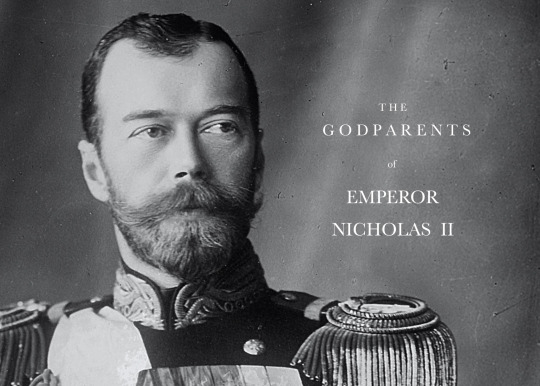


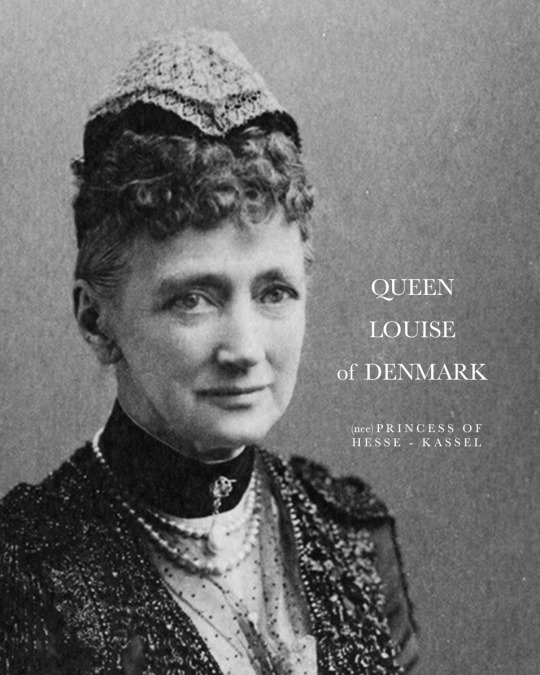

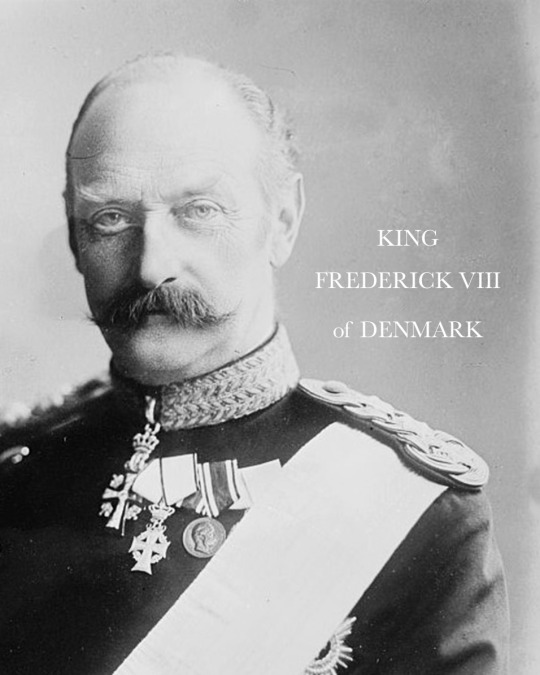
GODPARENTS OF NICHOLAS II
Born during his grandfather's reign on 18 May (New Style) 1868 at the Alexander Palace, Tsarkoe Selo in Saint Petersburg. He was the eldest son of Alexander III and his wife Maria Feodorovna (then, the Tsarevich and Tsarina of Russia). He was christened on 1 June at the Chapel of the Resurrection of the Catherine Palace at Tsarskoe Selo, by the confessor of the imperial family, protopresbyter Vasily Borisovich Bazhanov. His godparents were:
ALEXANDER II, EMPEROR OF RUSSIA - his paternal grandfather, the Russian Emperor stood as one of the godparents. He became the Emperor of All Russia in 1855. Alexander’s most significant reform as emperor was the emancipation of Russia’s serfs in 1861, for which he is known as Alexander the Liberator. He was assassinated in 1881 when the young Nicholas was only 12 years-old, to which he became the heir apparent upon his death.
PRINCESS MARIE OF HESSE AND BY RHINE, EMPRESS MARIA ALEXANDROVNA OF RUSSIA - his paternal grandmother, the consort of Emperor Alexander II, was another of his godparents. Known for her intellect, she was one of the founders of the Russian Red Cross Society. However, she suffered from tuberculosis from 1863 and spent long stays in southern Europe to avoid harsh winters. Although she and her husband were unofficially separated sometime after the death of their eldest son, Maria was treated with respect and love by her surviving family. Maria passed away from illness when the young Nicholas was still a child.
PRINCESS LOUISE OF HESSE-KASSEL, QUEEN CONSORT OF DENMARK - his maternal grandmother was listed as one of his godparents. Louise became the Queen consort of Denmark upon her husband's - King Christian IX - accession in 1863, just few years before her grandson Nicholas' birth. She, herself, was a niece of another King of Denmark (Christian VIII). The great dynastic success of Louise's six children was to a great extent a result of Louise's own ambitions - through them, she was a grandmother of not only the future Tsar of Russia (Nicholas II), but also that of King George V of the United Kingdom; King Constantine I of Greece; King Christian X of Denmark, and King Harken VII of Norway.
GRAND DUCHESS ELENA PAVLOVNA OF RUSSIA - his great-great-aunt, the wife of the late Grand Duke Michael Pavlovich, was one of his godparents. Born as Princess Charlotte of Württemberg, she became a close friend of his grandmother the Empress Maria Alexandrovna, and was known as an intellectual. She was also considered the most exceptional woman in the imperial family since Catherine the Great.
KING FREDERICK VIII OF DENMARK - then, the Crown Prince, his maternal uncle stood as one of his godparents. During the long reign of his father, he was largely excluded from influence and political power. Upon his father's death in 1906, he acceded to the throne at the advanced age of 62. In many ways, Frederick VIII was a liberal monarch who was much more favorable to the new parliamentary system introduced in 1901 than his father had been, being reform-minded and democratically inclined.
Source
86 notes
·
View notes
Text


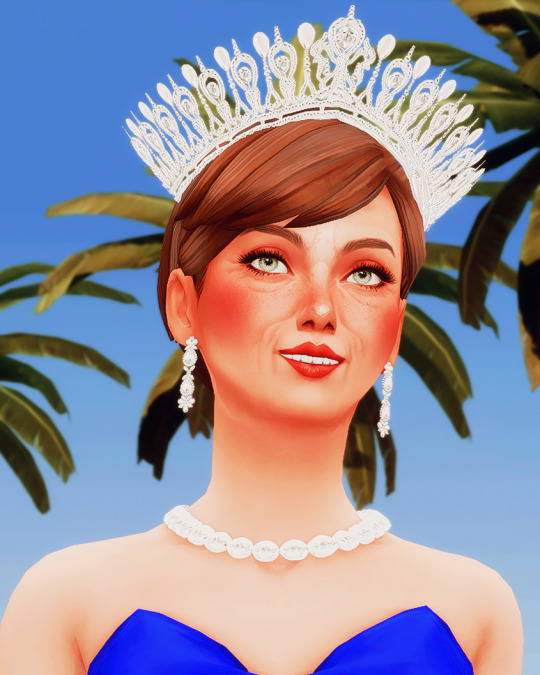
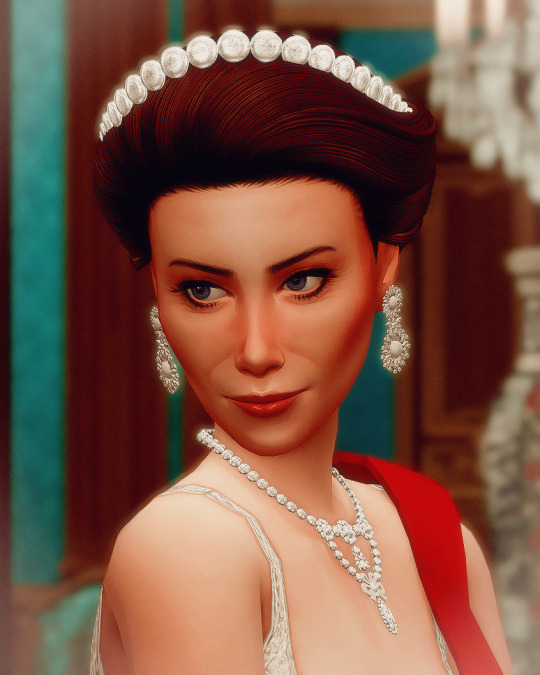

Sunderland's Royal Jewel Vault (10/∞) ♛
↬ Hesse Diamond Bandeau
This necklace-turned-tiara is one of the oldest in the royal vault. It originated in 1840 as a rivière of thirty-four brilliant diamonds. The diamonds were one of the hundreds of gifts the sixteen-year-old Princess Marie of Hesse received on the occasion of her wedding to Tsesarevich Alexander Nikolayevich, the future Emperor Alexander II of Russia. Marie, immortalized as Emperess Maria Alexandrovna, had a secluded upbringing in Darmstadt and found the opulence of the Imperial Russian court overwhelming, but she slowly began to identify with her adopted country over the years. Photographs depict the Empress drenched in jewels, including the diamond rivière, which she wore as a necklace. From here, the necklace's chain of inheritance gets a little muddy. Over the decades several of Empress Maria's daughters and daughters-in-law sported the necklace, yet there is no strong evidence of who owned the jewel following the Empress's death in 1880. Among others, two of the most notable wearers were Maria's successor Empress Maria Feodorovna (née Dagmar of Denmark) and her eldest daughter Queen Alexandra of Sunderland (née Grand Duchess Alexandra Alexandrovna). It is unclear which of Maria's female descendants owned the necklace, or if they had simply borrowed it for a time. Either way, the necklace eventually landed in the jewelry box of Queen Alexandra's daughter-in-law, Matilda Mary, and it remained in Sunderland from that point onwards. Matilda was never photographed wearing the necklace, but she eventually bequeathed the mysterious jewel to Katherine Rothman, her granddaughter-in-law, when she became Princess of Danforth in 1943. Katherine mainly opted to wear twenty-seven of the diamonds set on a tiara frame. She favoured this improvised bandeau for trips to the Royal Alexandra Opera House both during and after her tenure as Queen. As a tiara, the diamonds were practical and lightweight, better for evenings out than formal state events. The jewel's next wearer was Katherine's daughter-in-law Phyllis, who only ever wore the piece as a necklace, often pairing it with her Garland and Déléage Tiaras. The necklace was also worn without a tiara to many film premiers in the 80s and 90s. To this day these Hessian diamonds remain a popular staple of Phyllis's jewellery collection.
#warwick.jewels#ch: katherine#ch: phyllis#ts4#ts4 story#ts4 storytelling#ts4 edit#ts4 royal legacy#ts4 legacy#ts4 royalty#ts4 monarchy#ts4 screenshots#✨
49 notes
·
View notes
Text
CHILDREN OF PRINCESS VICTORIA MELITA OF EDINBURGH 🥺💙✨️🫶
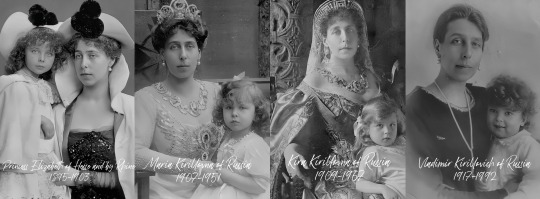
Princess Victoria Melita (25 November 1876 – 2 March 1936) was the second daughter and third child of Prince Alfred of Saxe-Coburg and Gotha and Grand Duchess Maria Alexandrovna of Russia! She was the granddaughter of Queen Victoria from her English father's side and Tsar Alexander II's granddaughter from her Russian mother's side. She is famous for her divorce and remarriage scandals!
In 1894, at the age of 18, at the suggestion of her grandmother, Queen Victoria, she married her cousin, Prince Ernest of Hesse and by Rhine! Between 1895 and 1900, Victoria Melita and Ernest had 2 children:
Princess Elizabeth of Hesse and by Rhine (11 March 1895 – 16 November 1903) affectionately known as "Ella"!
a stillborn son (25 May 1900 - 25 May 1900) who died in the womb of his mother In 1900, Victoria Melita gave birth to a stillborn son, which was very disappointing for Queen Victoria!
In 1901, Princess Victoria Melita and Ernest divorced because they had an unhappy and incompatible marriage. They were first cousins who married under family pressure, but they soon realized that they had nothing in common Princess Victoria was in love with another cousin, Grand Duke Kirill Vladimirovich of Russia, while Ernest was rumored to be a homosexual.
Princess Victoria Melita had a complicated and tragic relationship with her daughter Princess Elisabeth... She was fond of her daughter, but she was not very involved in her upbringing.
Princess Victoria Melita's relationship with her daughter Princess Elisabeth was strained after the divorce. Princess Elisabeth blamed her mother for the divorce and resented her for leaving her father. Princess Victoria tried to reconnect with her daughter during her visits, but she was only partially successful. Princess Elisabeth was very close to her father and preferred to stay with him at Wolfsgarten, where he built her a small house of her own in the woods. Princess Victoria and Princess Elisabeth never had a chance to fully reconcile, as Princess Elisabeth died of typhoid fever in 1903, at the age of eight. It was a tragic loss for both parents, who loved their little daughter dearly.
Victoria melita later wrote in her memoirs: "My little Ella was taken from me. She was the joy of my life and I never really recovered from this loss."
Victoria melita's memories of her daughter were mostly sad and bitter, but she also cherished some happy moments they shared. She remembered how Ella loved animals and nature, and how she enjoyed playing in the woods near Wolfsgarten, where Ernest built her a small house of her own. She also remembered how Ella had a sweet and gentle personality, and how she looked like a fairy with her Dark hair and blue eyes... Two years after the death of her daughter Elizabeth, in 1905 she married her cousin and long-term lover Kirill Vladimirovich! In 1907, Victoria Melita and Kirill welcomed their first child, a daughter named Marie. Marie was named after her maternal grandmother! In 1909, Kirill and Victoria Melita welcomed their second child, a daughter named Kira! And in 1917, Kirill and Victoria Melita welcomed their third and last child, a son named Vladimir, The birth was so difficult and painful that 41-year-old Victoria Melita went near death during the birth of Vladimir! Princess Victoria Melita had 3 children from her second marriage who survived to adulthood and married and all had children. Despite the birth of three more children, Princess Victoria Melita never forgot her little Elizabeth and always kept a portrait of her in her room until her death in 1936...
#Victoria melita of Edinburgh#princess elisabeth of hesse#Marie Kirillovna#Kira kirillovna#Vladimir Kirillovich
32 notes
·
View notes
Note
Did the Leuchtenberg branch in Imperial Russia have anything to with their paternal relatives back in Munich?
Hello! I haven't really looked into the Russian Leuchtenbergs so I can't tell you for sure, but for the little that I've researched it seems they eventually lost their personal connection to Bavaria. After Eugène and Auguste's son Maximilian died in 1852, his widow sold the Leuchtenberg palace to Prince Luitpold (the future Regent of Bavaria), which is really telling of how interested they were in ever coming back to Munich.
As for keeping contact with any of their Bavarian relatives, I wouldn't know for certain, honestly. I came across a news report from 1868 of a dinner given in honor to Empress Maria Alexandrovna of Russia, who was visiting Munich accompanied by Nikolay, 4th Duke of Leuchtenberg and Prince Alexander of Hesse. Reportedly later that evening they went to the Hoftheater with Ludwig II, Prince Otto and Dowager Queen Marie, where they were forced to listened to Wagner's latest opera. So at least we know Nikolay met some of his Bavarian relatives, but I don't know what kind of relationship he had with them, if he had any at all.
Sorry that I couldn't tell you more! If a come across something more concrete I'll let you know.
2 notes
·
View notes
Photo

Marie, Duchess of Edinburgh, nee Grand Duchess of Russia, with her children, Alfred, Marie, Victoria Melita and Alexandra, and niece-in-law, Duchess Charlotte of Saxe-Meiningen, nee Princess of Prussia, with her daughter, Feodora, in 1886.
#Duchess Marie of Edinburg#Duchess of Saxe-Coburg and Gotha#Grand Duchess Maria Alexandrovna of Russia#Prince Alfred#Crown Princess of Romania#Queen of Romania#Princess Marie of Edinburgh#Princess Victoria Melita#Grand Duchess of Hesse#Grand Duchess Victoria Feodorovna of Russia#Princess Charlotte of Prussia#Duchess Charlotte of Saxe-Meiningen#Princess Feodora of Saxe-Meiningen
39 notes
·
View notes
Text
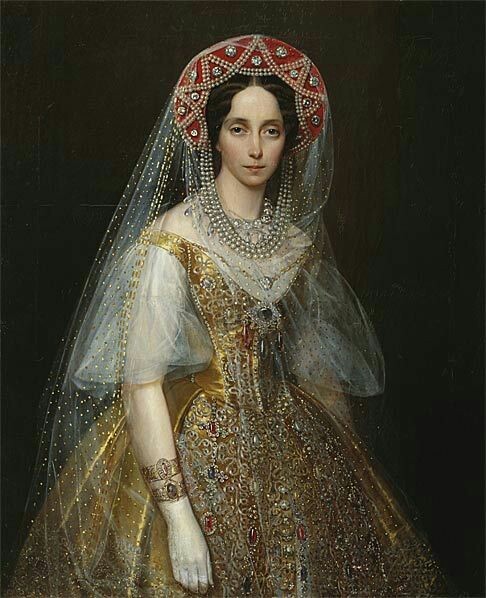
HIM Empress Maria Alexandrovna of Imperial Russia, Princess Marie of Hesse and by Rhine in full court dress and red kokoshnik with pearls. Painted by Ivan Makarov in 1837.
She is the mother of Tsar Alexander III, and thus the grandmother of Russia's last emperor Tsar Nicholas II.
#kokoshnik#russian#russian court dress#royalty#empress#empire#romanov#house of romanov#russia#imperial russia#maria alexandrovna#tsarina#empress maria alexandrovna#tsarina maria alexandrovna#painting#art#portrait#princess marie of hesse#marie of hesse#hesse#hesse and by rhine#russian empire
72 notes
·
View notes
Text

Grand Duchess Marie Alexandrovna, Duchess of Saxe-Coburg and Gotha with her three eldest daughters, Crown Princess Marie of Romania, Grand Duchess Victoria Melita of Hesse-Darmstadt and Hereditary Princess Alexandra of Hohenlohe-Langenburg at the wedding of Duke Ernst Günther of Schleswig-Holstein-Sonderburg-Augustenburg and Princess Dorothea of Saxe-Coburg and Gotha. 1898.
You can see Tsar Ferdinand of Bulgaria behind Crown Princess Marie.
Close up photograph of Crown Princess Marie of Romania.

Close up photograph of Grand Duchess Victoria Melita of Hesse-Darmstadt.

Source: photograph kindly shared by Diana Mandache and enhanced by me.
#princess marie of Edinburgh#crown princess marie of Romania#queen marie of Romania#princess Victoria Melita of Saxe-Coburg and Gotha#grand duchess Victoria Melita of Hesse-Darmstadt#princess Alexandra of Saxe-Coburg and Gotha#Hereditary Princess Alexandra of Hohenlohe-Langenburg#1898#late 1890s#1890s fashion#1890s#german royal#german royalty#german romanticism#queen Marie of Romania#Grand Duchess maria Alexandrovna of Russia#Grand Duchess maria Alexandrovna#duchess maria of saxe-coburg and gotha
80 notes
·
View notes
Text

Emperor Nicholas I (1796 - 1855) and Empress Alexandra Feodorovna (1798 -1860 - nee Princess Friederike Luise Charlotte Wilhelmine of Prussia
Nicholas I, the Iron Tzar, and his sons
This couple was the first “Nicholas and Alexandra” in the Romanov Dynasty. They were Nicholas II's great grant-parents.
It was said that he was the best-looking man in Europe. She was tall and fair and enjoyed jewels, gowns, and balls. They loved each other, and their union was not unhappy, but he did not remain faithful to her (after he died, his last mistress was employed as Alexandra’s lectrice, and they became friends.) Nicholas and Alexandra had seven children, four sons, and three daughters. Those four sons would ensure that the generation of Romanovs following them would not want for male heirs. As a matter of fact, there would be too many Grand Dukes, making it necessary for his grandson, Alexander III, to change the Pauline laws, re-defining who would be considered a Grand Duke or Duchess, among other things (only grandsons/grandaughters of a Tzar would be Grand Duke/Duchesses; great-grandsons and so on would be Princes and Princesses of the blood).

Nicholas I with his four sons: Tsarevich Alexander Nikolayevich (1818 - 1881 - future Alexander II), Grand Duke Konstantin Nikolayevich (1827 - 1882), Grand Duke Nikolay Nikolayevich (1831 - 1891), and Grand Duke Mikhail Nikolayevich (1832- 1909.)
According to the literature, Nicholas raised his two elder sons very strictly but had more of a paternal relationship with the younger two. His priority was to bring them up so that they were true soldiers and so that when Alexander inherited the throne, the other three would help and support him. And they did. Nicholas I adored his daughters and was devastated when his youngest daughter Alexandra (better known as Adini), died. (His daughters would be discussed in another post.)
Below are the sons of Nicholas I and their spouses:
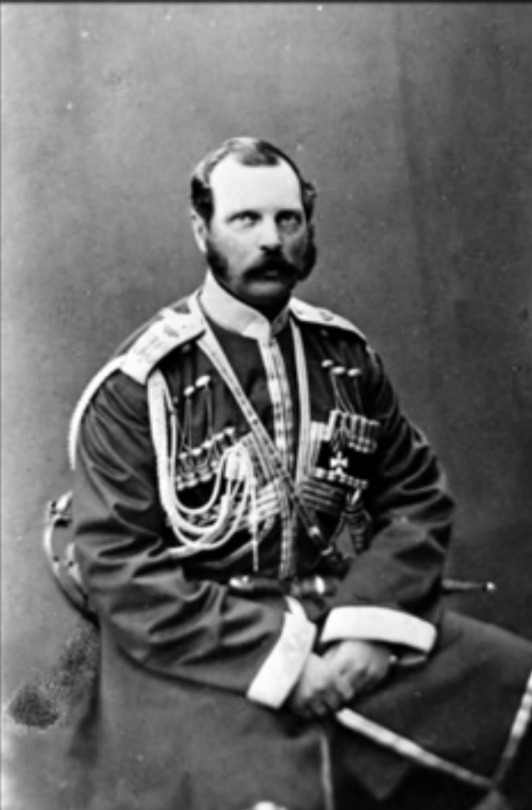


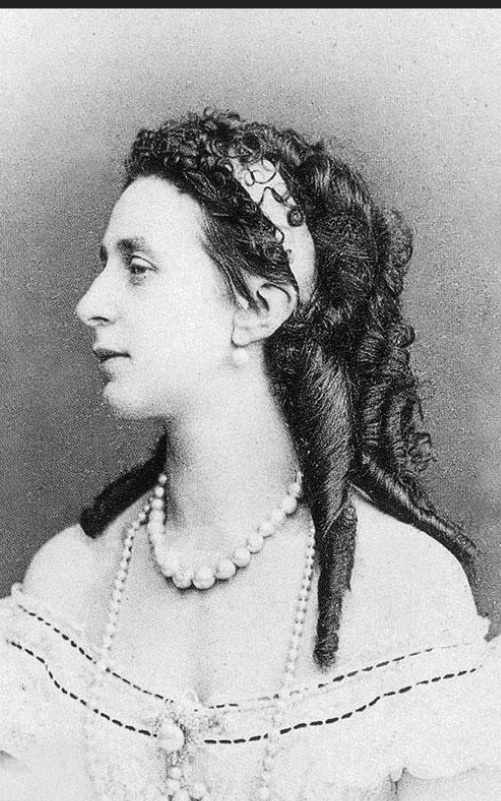

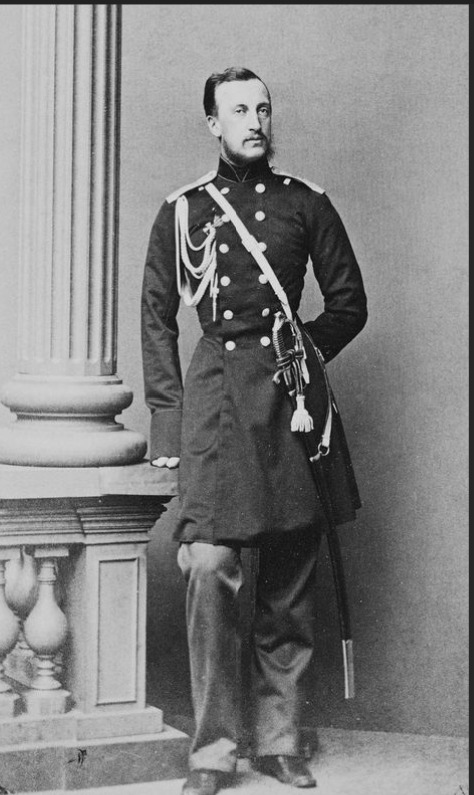

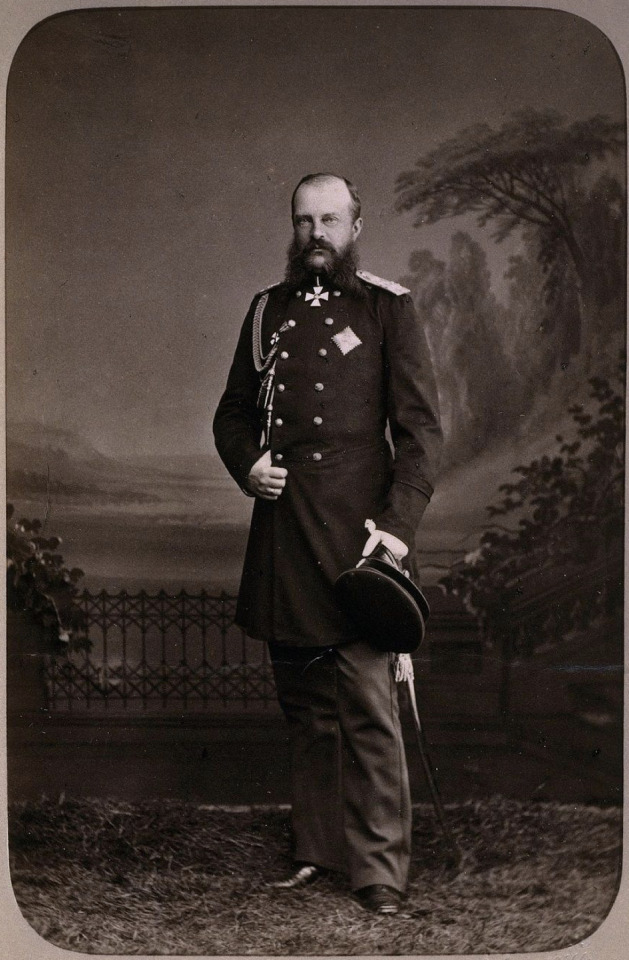
1. Emperor Alexander II and his first wife Empress Maria Alexandrovna (born Princess Wilhemine Marie of Hesse); Issue listed below (Only legitimate issue surviving to adulthood listed; not in birth order)
Grand Duchess Marie
Grand Duke Nicholas Alexandrovich
Alexander III
Grand Duke Vladimir
Grand Duke Alexei
Grand Duke Sergei
Grand Duke Pavel
2. Grand Duke Konstantin Nikolayevich and Grand Duchess Alexandra Iosifovna (Princess Alexandra of Saxe Altenburg); Issue listed below (Only legitimate issue surviving to adulthood listed; not in birth order) - They would be known as the "Konstantinovichi"
Grand Duke Nicholas
Grand Duke Konstantin
Grand Duke Dmitry
Grand Duke Vyacheslav
Grand Duchess Olga
Grand Duchess Vera
3. Grand Duke Nikolay Nikolayevich (the Elder) and Grand Duchess Alexandra Petrovna of Russia, born Duchess Alexandra Frederica Wilhelmina of Oldenburg. Issue listed below (Only legitimate issue surviving to adulthood listed; not in birth order); Known as the "Nikolayvichi”
Grand Duke Nicholas Nikolayevich
Grand Duke Peter Nikolayevich
4. Grand Duke Mikhail Nikolayevich and Grand Duchess Olga Feodorovna (nee Princess Cecilie of Baden) Issue listed below (Only legitimate issue surviving to adulthood listed; not in birth order) They were known as the "Mikhailovichi" (although they preferred to be called the "Michels;" the family called them the "Wild Caucasians" because they grew up in the Caucus and had strong opinions that they voiced loudly)
Grand Duchess Anastasia Mikhailovna
Grand Duke Nicholas Mikhailovich
Grand Duke Mikhail
Grand Duke George
Grand Duke Alexander
Grand Duke Sergei
Grand Duke Alexei
The children and grandchildren of these couples would be directly involved in one way or the other in the Great War, the Russian Revolution, the Civil War in Russia, and the overthrow of the monarchy and the Romanov Dynasty. Some would lose their lives, others would lose children, brothers, and spouses, and all would lose their country, status, and privileges.
#russian history#romanov dynasty#imperial russia#Emperor Nicholas I#Emperor Alexander II#Grand Duke Konstantin Nikolayevich#Grand Duchess Alexandra Iosifovna#Grand Duke Nikolay Nikolayevich#Grand Duchess Alexandra Petrovna of Russia#Grand Duke Mikhail Nikolaevich#Grand Duchess Olga Feodorovna#vintage photography
93 notes
·
View notes
Photo

Empress Maria Alexandrovna, wife of Alexander II. Copy of a portrait by Von Angeli, 1884.
Credits: The Royal Collection
#Empress Maria Alexandrovna#Maria Alexandrovna#Princess Marie of Hesse#Romanov#russian royalty#1884#royalty#imperial russia
16 notes
·
View notes
Text


"From Berlin, we went through Weimar to Frankfurt am Main, where the first joyful event was meeting Sasha's lovely bride. It was an important moment in my life when I pressed my new daughter to my heart. The first impression made by her, was very good, very favorable for her. She has everything to please, the deposit to everything that makes up a beautiful person, and in time she will, in all probability, develop a beautiful, noble posture. She is even more beautiful than I imagined."
- Empress Alexandra Feodorovna of Russia on her future daughter-in-law, Princess Marie of Hesse (later Empress Maria Alexandrovna, consort of Emperor Alexander II).
57 notes
·
View notes
Text


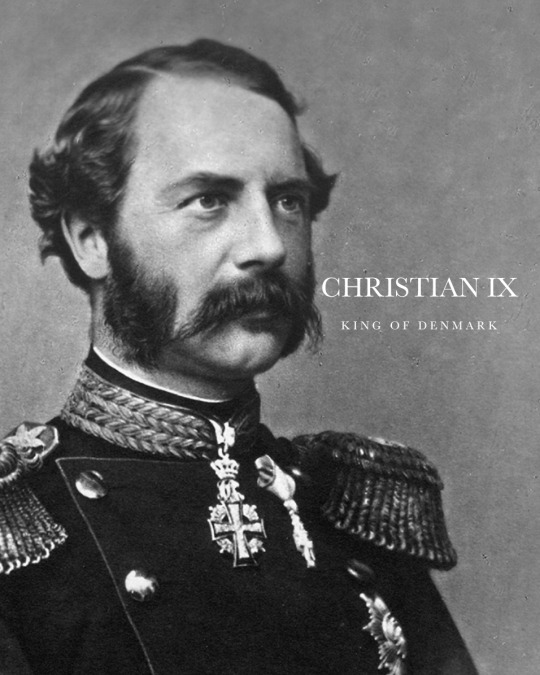


GODPARENTS OF GRAND DUCHESS XENIA ALEXANDROVNA
Grand Duchess Xenia Alexandrovna of Russia was born during the reign of her grandfather Emperor Alexander II on 6 April 1875 at the Anichkov Palace, Saint Petersburg. She was the elder daughter of the Tsesarevich (later Alexander III) and his wife, Tsesarevna Maria Feodorovna of Russia (later Empress consort). She was christened 29 April in Saint Petersburg, with her godparents listed below:
PRINCESS MARIE OF HESSE AND BY RHINE, EMPRESS MARIA ALEXANDROVNA OF RUSSIA - her paternal grandmother, the consort of Emperor Alexander II, was one of her godparents. Known for her intellect, she was one of the founders of the Russian Red Cross Society. However, she suffered from tuberculosis from 1863 and spent long stays in southern Europe to avoid harsh winters. Maria passed away from illness when Xenia was still a child.
KING CHRISTIAN IX OF DENMARK - her maternal grandfather, the Danish King was one of her godparents. His initial unpopularity at the start of his reign, and the many years of political strife, where the king was in conflict with large parts of the population, his popularity recovered towards the end of his reign, and he became a national icon due to the length of his reign.
GRAND DUKE VLADIMIR ALEXANDROVICH - her formidable uncle was another of her godparents. He followed a military career and occupied important military positions during the reigns of the last three Russian Emperors, including her father Alexander III and brother Nicholas II.
PRINCESS THYRA OF DENMARK, CROWN PRINCESS OF HANOVER AND DUCHESS OF CUMEBRLAND - her maternal aunt and look-alike, was among the grand duchess' godparents. The youngest daughter and fifth child of Christian IX of Denmark. In 1878, she married Ernest Augustus, the exiled heir to the Kingdom of Hanover. As the Kingdom of Hanover had been annexed by Prussia in 1866, she spent most of her life in exile with her husband in Austria.
Source
22 notes
·
View notes